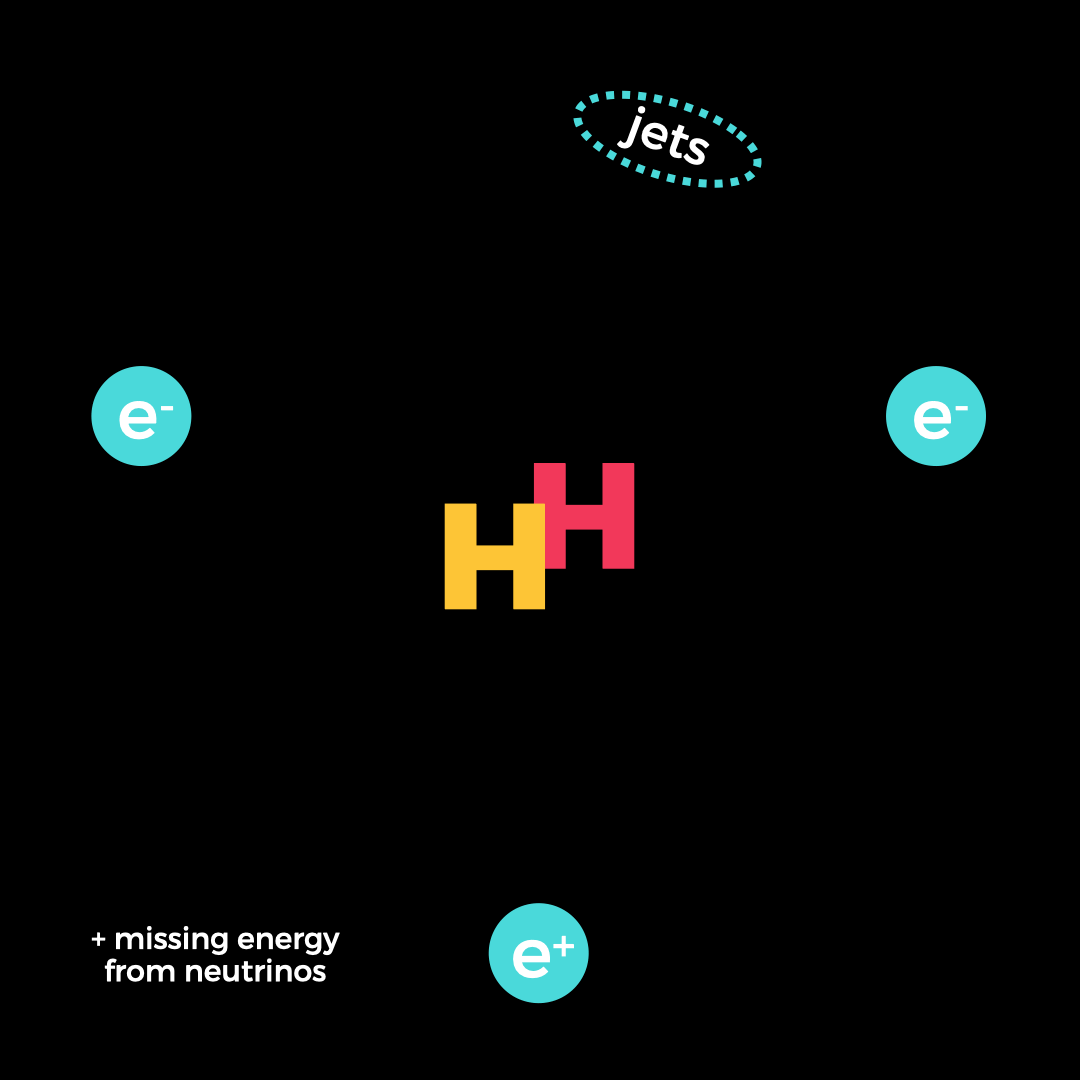Menu of the day: Di-Higgs soup!
19 April 2024 | By
If spotting one Higgs boson is interesting, what happens when you spot two at the same time? Well, imagine the Higgs boson as a special magnet. With just one magnet, you can learn how it interacts with different materials like wood or iron. But with two magnets, you can investigate how they interact with each other. Similarly, by investigating how pairs of Higgs bosons are created and how they behave, physicists can uncover secrets about the Higgs boson itself and learn about its role in the Universe.

When a Higgs boson is produced, it decays almost immediately to other particles. In previous ATLAS analyses, researchers searched for di-Higgs production by looking for specific Higgs-boson decays. For instance, they focused on one Higgs boson decaying to a pair of bottom (b) quarks, while the other decayed to a pair of photons (γ). This method can work well when both Higgs bosons can be easily reconstructed.
Yet the many possible decay processes of the Higgs boson present a challenge to this approach. Higgs bosons can also decay into two W bosons, two Z bosons, or two tau leptons (τ). These particles in turn decay into electrons, muons, quarks (which physicists see as “jets” in the detector), and neutrinos (which pass through the detector unseen). It is virtually impossible to disentangle these particles to discern the specific Higgs-boson decay chain. An example of these ambiguous Higgs-pair decays is shown in Figure 1. Here, ATLAS records collision events with three electrons, jets and missing energy from neutrinos, but there are many different ways this could have been produced.
Instead of unravelling the complex decay chain of two Higgs bosons, ATLAS physicists focused on the “soup” of particles they produce.
In their latest analysis, instead of unravelling the complex decay chain, ATLAS physicists focused on the “soup” of particles produced. They separated the events in nine different categories based on the number of particles in the final event. Three categories have two photons (from H→γγ), and one or two electrons, muons or taus (from H→WW/ττ/ZZ). The other six categories have no photons, but different numbers of electrons, muons, taus and b-quarks (from H→bb). Figure 2 shows how the targeted di-Higgs decays fall into these different categories.
However, there are many more commonly occurring processes that can occur in ATLAS collisions. Some of these can produce very similar signatures in the ATLAS detector as di-Higgs events and are considered background. So, how can physicists differentiate between a potential di-Higgs event and a background event? By employing artificial intelligence! In their new analysis, physicists trained Boosted Decision Tree (BDT) algorithm using simulated events that mimic the expected signatures of di-Higgs and background events in the ATLAS detector. The algorithm learns how to distinguish between the two types of processes based on the energy deposited by the final particles and their position in the detector. After multiple training iterations with simulated events, the algorithm can determine the probability that an event with certain characteristics originates from di-Higgs production or a background process. With this training complete, the algorithm was ready to look for di-Higgs events in real LHC data!
By combining information from all of the different categories, the ATLAS team expected to set a limit on the rate of di-Higgs production of 11 times the rate predicted by the Standard Model. In the end, some categories had more data events in them than expected, therefore the observed limit on the rate of di-Higgs production was set at 18 times the Standard Model prediction. Di-Higgs production is one of the rarest processes predicted to occur in the Standard Model, so it’s important to catch as many of these events as possible. Combining this result with other ATLAS searches for di-Higgs production will allow physicists to further hone in on this crucial process.
Learn more
- Search for non-resonant Higgs boson pair production in final states with leptons, taus, and photons in proton-proton collisions at 13 TeV with the ATLAS detector (ATLAS-CONF-2024-005)
- See also the full list of ATLAS physics results.






